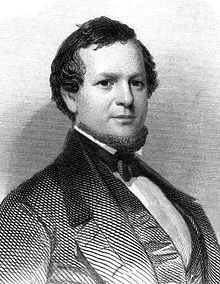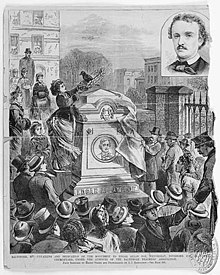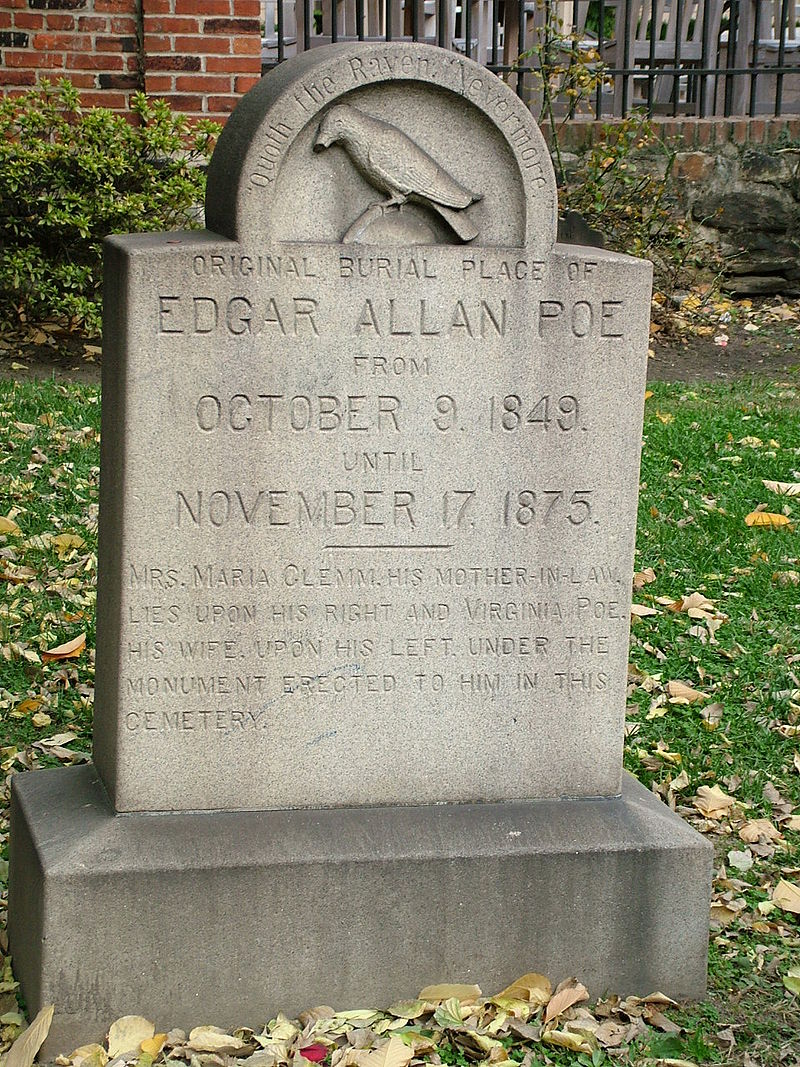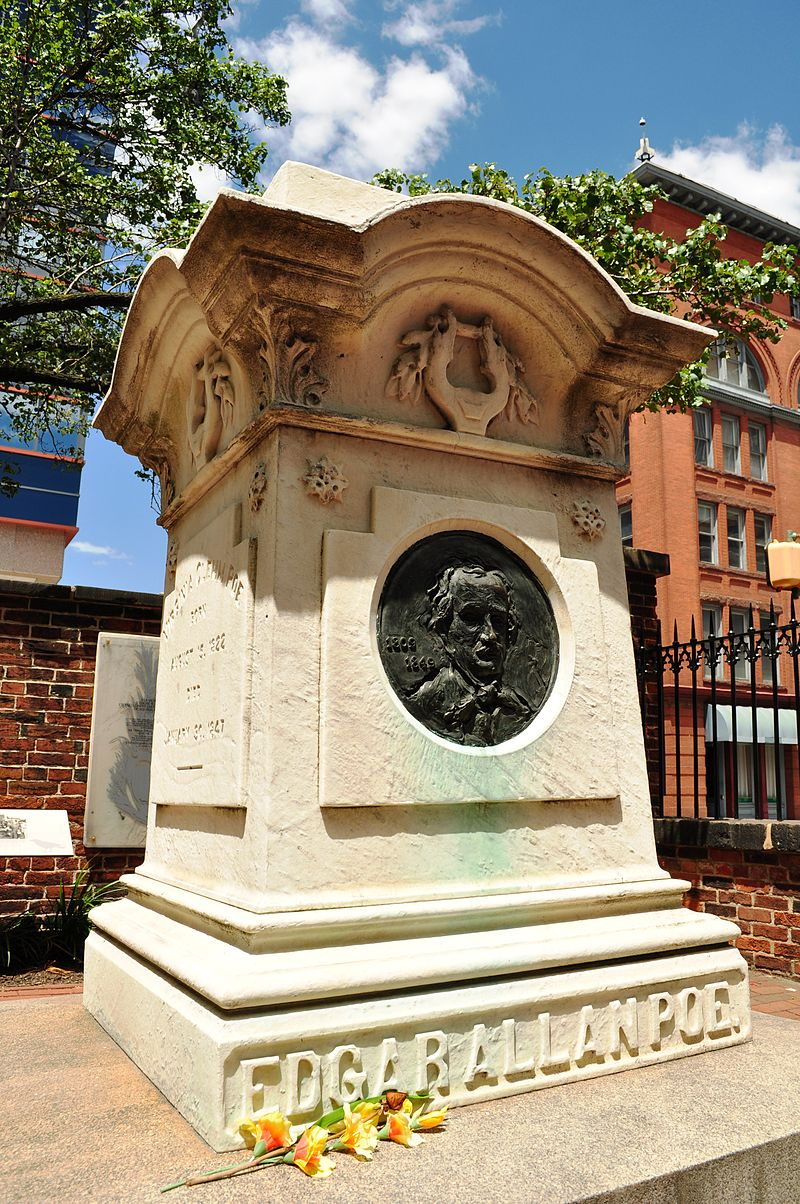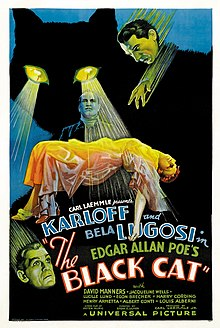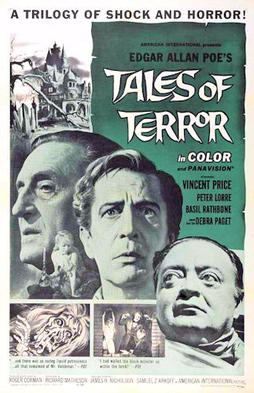1/30/1945 - Desperate to return to Germany as the Soviet Union's Red Army sweeps westward into Poland, in the final year of WWII, thousands of German civilian refugees, soldiers and Nazi officials crowd aboard the Nazi transport ship Wilhelm Gustloff at the port of Gotenhafen (now the Polish city of Gdynia, the 12-largest city in the country), headed for the naval facilities at Kiel, Germany as part of Gross Admiral Karl Doenitz's evacuation plan known as "Operation Hannibal." The transport's first night on the Baltic Sea will also be the ship's last. Torpedoed by a Soviet submarine, the ship will go down roughly fifty minutes later, taking the lives of roughly 9,600 men, women, and children ... the worst loss of life during a single ship sinking in the history of the world (by comparison, the death of the passenger liner RMS Titanic in 1912 costs an estimated 1,500 individuals their lives, 1.029 people die when the paddle steamer General Slocum catches fire on New York City's East River in 1904, 1,198 travelers perish when the passenger ship RMS Lusitania is torpedoed off the coast of Kinsale, Ireland in 1915, and 1,177 United States sailors lose their lives when the battleship USS Arizona is blown up at anchor on the waters of Oahu, Hawaii's Pearl Harbor naval base in December of 1941).

Tragedy In The Baltic Sea
Keel laid down at the Blohm & Voss shipyard in Hamburg, Germany on August 1, 1936, and launched less than a year later on May 5, 1937, the doomed transport is originally to be named Adolf Hitler, after the Third Reich's dictator, but before going to sea, the ship is instead christened Wilhelm Gustloff to honor a leader of the Nazi Party's Swiss branch that is assassinated by a Jewish medical student from Croatia named David Frankfurter in 1936 (surrendering to authorities immediately after pumping five bullets into the Nazi official's head, neck, and chest, Frankfurter will spend all of WWII locked up in a Swiss jail cell ... sitting next to Gustloff's widow at memorial services for the murdered Nazi, Hitler himself will decide on the name change that takes place). The craft created (at a cost of 25 million Reichmarks) measures 684 feet and one-inch long, is 77 feet and five-inches wide, has a height of 183 feet and nine-inches spread over eight decks, has a draught of 21 feet and four-inches, has a tonnage of 25,484 GRT, is powered by four 8-cylinder MAN diesel engines driving two 4-blade propellers (traveling at 15.5 knots, the vessel has a range of 12,000 nautical miles), and is built to accommodate a crew of 417 and 1,463 passengers (there are 248 two-bed and 241 four-bed passenger passenger, fifty bathrooms, a hundred showers, and 145 toilets, twelve watertight bulkheads, and twenty-two lifeboats each with a capacity of carrying 95 individuals). The first ship built under the Third Reich's Strength Through Joy program, with the idea that a happy worker works harder, the Wilhelm Gustloff is originally made to provide German functionaries and workers with low-cost recreational and cultural activities that include concerts, cruises, and special holiday trips while serving as a public relations tool for Nazi party. With over 50,000 people on-hand, including Gustloff's widow, Hedwig (she will christen the new ship with a bottle of champagne), German dictator Adolf Hitler, Dr. Robert Ley (head of the German Labour Front), Rudolf Blohm (head of the shipbuilders, Blohm & Voss), and other top Nazi officials, the ship is launched on May 5, 1937 (she will not be completed though until March of 1938).
Building The Wilhelm Gustloff
Off To Sea
Finally ready to start taking German citizens all about the ports of Europe, the Wilhelm Gustloff, after completing trials in the North Sea, is turned over to it's owners for her maiden voyage on March 16, 1938. Passengers boarded, the ship's first occupants consist of Austrians that the Third Reich is hoping to influence into voting for Germany's annexation of Austria. Her second voyage, a three-day cruise, rewards workers and their families that built the Wilhelm Gustloff. The vessel's third voyage is to be another North Sea reward cruise that also includes the German liners Der Deutsche, Oceania, and Sierra Cordoba. Separated when a spring storm hits the fleet (winds will reaches 62-mph), the Wilhelm Gustloff (commanded by Captain Carl Lubbe finds herself the nearest ship that can provide help to the SOS calls that come in when the 1,836 gross tonnage freighter Pegaway (commanded by Captain G. W. Ward) begins to flounder. First try a failure when the oar-powered lifeboat sent to help the Pegaway also begins to sink, Ward will launch a second lifeboat which is motor operated (Lifeboat No. 6, the launch is crewed by ten men that are commanded by Second Officer Schurmann of the Wilhelm Gustloff) that helps rescue the twelve sailors of the first lifeboat, and then manages to successfully haul to shelter the dog-paddling 19-man crew of the drowned ship. The Wilhelm Gustloff's next journey takes the liner to the shores of England (she is kept in international waters, three miles from the port of Tilbury) where the ship serves as polling place for Germans and Austrians in Great Britain that want to vote in the plebiscite that ends up unifying Germany and Austria into one country (1,172 Germans and 806 Austrians are ferried to vote and cast 1,968 votes for and 10 votes against the unification). Returned to Hamburg, the Wilhelm Gustloff's next voyage is an Easter holiday voyage to Portugal's Madeira Islands (accompanied again by Der Deutsche, Oceania, and Sierra Cordoba), but with a new captain after 58-year-old Lubbe suffers a fatal heart attack while captaining his command from the ship's bridge (his replacement will be Captain Friedrich Peterson.
Hitler & Captain Lubbe Inspect The Crew - 3/29/1938
Pegaway Going Under
War clouds gathering, instead of giving cheap cruises to designated workers and government personnel, after General Francisco Franco's Nationalist victory in the Spanish Civil War, Wilhelm Gustloff's next assignment is to help carry back to Germany (along with seven other vessels) soldiers, sailors, airmen and service personnel of the Third Reich's victorious Condor Legion (from Vigo, Spain to Hamburg, Germany takes the Wilhelm Gustloff five days). And then the vessel is back to taking assorted Germans on vacation cruises, and between 3/14/1938 and 8/26/1939 (WWII will begin on September 1st), the Wilhelm Gustloff will take over 80,000 passengers on sixty voyages of European waters. Bottled up in the Baltic Sea when war arrives, no Germans available for cruising for the foreseeable future, the Wilhelm Gustloff is converted into a hospital ship and rechristened Lazarettschiff D. As such, she will begin treating the wounded in September of 1939, with her first patients being 650 Polish soldiers wounded and captured defending their country. The first Germans to be cared for by the Lazarettschiff D are ten crew members of the minesweeper M-85, sunk on October 1st when she hits one of the mines she is trying to remove from the waters near the port of Danzig, East Prussia. Then, when the war turns hot as Germany invades Norway, the hospital ship will dock in Oslo, Norway to support Third Reich fighters in their campaign to conquer the Nordic country (she will return to the port of Kiel with 750 wounded Germans on board). In all during her duty as a hospital ship, the former Wilhelm Gustloff will treat 3,151 souls, make 1,739 X-ray examinations, and transport 1,961 injured individuals to Germany.
Removing A Wounded German
Converted
The submarine war against the Allies ramping up, now stationed at the port of Gotenhafen (she will reside there for the next four years and two months), the Lazerettschiff, on November 20, 1940 begins another conversion and takes back her original name, with her hospital coloring of white with a large stripe of green circling the entire craft buried under this buckets of grey camouflage paint, this time becoming a barracks ship for 1,000 cadets being schooled to serve in Germany's submarine force (the trainees belong to the 2nd Submarine Training Division and are under the tutelage of Lieutenant Commander Wilhelm Zahn (command of the ship itself is now the responsibility of Captain Bertram, but for the ship's final voyage, Captain Friedrich Peterson will take over again), a 33-year-old U-boat captain with experience piloting the submarines U-56 and U-69, known in the naval service as the man who nearly sunk Winston Churchill (for a 1939 incident in which he hits the battleship HMS Nelson, carrying Churchill, Admiral of the Fleet Sir Charles Forbes, and First Sea Lord Admiral Sir Dudley Pound, with two torpedoes that fail to detonate). For the most part, the Wilhelm Gustloff has a boring WWII at Gotenhafen, sustaining only minor damage when B-24 bombers from the American 8th Air Force attack the harbor on 10/9/1943 (a near miss tears a four and a half foot gash in the ship's starboard side and bends the ship's right propeller shaft ... both wounds will be rapidly repaired). The calm before the storm, on 1/30/1945, the German liner will be front and center among the tragedies ending WWII.
In Profile As A Barracks Ship
Zahn
What brings the Wilhelm Gustloff front-and-center back into the war is the Soviet offensive from the east that quickly cuts off escape routes for German citizens and Nazi officials in East Prussia and Poland, making a sea escape into a viable option. Dubbed "Operation Hannibal," the head of the German Navy's massive evacuation from ports around the Gulf of Danzig (it will be the last coordinated operation of the German Navy during WWII), Gross Admiral Karl Doenitz cobbles together a "Dunkirk-style" plan using everything still afloat in the region, freighters, luxury liners, warships, and civilian costal vessels to move refugees from the immediate danger coming out of the east, to the relative safety of Third Reich ports in northern Germany and Denmark. And so, once more the Wilhelm Gustloff is transformed, this time becoming an evacuation vessel. Built to carry a maximum of 1,900 passengers and crew, as thousands of desperate Germans flood into the Gotenhafen harbor (over 100,000 will flood into the harbor area), exact counts and possession of tickets is waived to the extent that over 10,500 people will be allowed to board the liner ... a crew of 173 (there will be four naval captains aboard when the vessel leaves port, Peterson, Zahn, and two commanders from German's merchant marines who will serve as senior bridge officers, Carl Kohler and Heinrich Weller), 918 officers, NCOs, and sailors from the submarine school, 373 female naval auxiliary helpers (surrounded by tile mosaics, the woman are put in the drained swimming pool area of the ship's E-Deck), 162 wounded soldiers, and 8,956 other passengers that includes civilians, Gestapo personnel, members of Organization Todt (the civil and military engineering arm of the Third Reich, named after its founder, Fritz Todt), and Nazi officials and their families (on board will be between 4,000 and 5,000 children), occupying the Adolph Hitler Suite series of rooms reserved for the dictator for the first and last time are the mayor of Gotenhafen and his family. Zahn supervises the loading of fuel and supplies (among them are several unmarked crates protected by armed guards that are placed in the hold of the ship, rumored to be the priceless panels of the "Amber Room" of the Russian Czar's Leningrad palace that are never seen again after reaching Gotenhafen), and oversees the installation of 11 anti-aircraft guns. Everyone gets a life jacket coming aboard, but sadly, when the Wilhelm Gustloff leaves port, she is carrying only 12 of her already inadequate complement of 22 lifeboats.
Pool Area
Evacuation orders received, the Wilhelm Gustloff is to be accompanied on her voyage by the Hansa (originally the SS Albert Ballin, but renamed when Nazi officials discover that Ballin was a Jew, an refugee overloaded luxury liner of the Hamburg-American line that has a capacity of carrying 1,650 passengers) and two armed escorts (the torpedo boat TF-1, and the S
leipner-class destroyer, Lowe), but the Hansa and TF-1 both experience engine troubles and are unable to join the Wilhelm Gustloff (and the Lowe will soon discover that her guns are frozen to her deck). There will be no air cover for the voyage. With her officers arguing over how to get the ship to Kiel (Zahn wants to run slowly, close to shore, where Russian submarines cannot operate, but Peterson rejects the proposal, fearing the mined area and the length of time the Wilhelm Gustloff will take reaching the safety of Germany with thousands of freezing refugees aboard), Peterson decides to run full speed (instead of zig-zagging as is the usual policy in submarine waters) through mine-swept shipping lane No. 58 with her green and red navigation lights on (to prevent running into a convoy of German minesweepers also using the channel, making the liner stick out like a sore thumb as she moves westward). Fate sealed with Peterson's decisions, with snow and hail falling on the cold winter (it is blustery 0 degrees outside) day of Tuesday, January 30, 1945, the Wilhelm Gustloff leaves the Gotenhafen harbor's Oxhoft Pier at 12:30 in the afternoon for her rendezvous with the bottom of the Baltic Sea, for waiting offshore for the liner is the Soviet submarine, S-13, commanded by naval veteran, 32-year-old Captain Alexander Marinesko.
Hansa
Lowe
S-13
Keel laid down in October of 1938, launched in April of 1939, and commissioned into the Soviet Union Navy on July 31, 1941, the S-13 is 255 feet and 3 inches long, has a beam of 21 feet, has a drought of 14 feet and 5 inches, has two diesel engines and two electric motors, can travel at 19.5 knots surfaced and 9 knots submerged, can dive to a depth of 330 feet, carries weaponry consisting of one 100mm gun, one 45mm cannon, and twelve torpedoes (fired from 4 forward tubes and 2 aft tubes), and is crewed by fifty officers and men (only three of the boats produced, S-13 being one of them, will survive WWII). Commanding the S-13 is Alexander Marinesko, the Odessa, Ukraine son of a Romania sailor (Ion) and a Ukrainian woman, Tatiana Mihail
ovna Koval. Trained in the Soviet Merchant Navy and the Russian Black Sea Fleet (he begins his career at sea as cabin boy on a freighter), the young sailor is transferred to the Baltic Fleet before WWII breaks out. In March of 1936 he is promoted to ensign, in November of 1938 he is advanced to senior lieutenant, and in the summer of 1939 he is given command of the new submarine, M-96 (considered to be the best sub in the Soviet's Baltic Fleet), and in 1940, he receives a gold watch and promotion to captain-lieutenant (the equivalent of a Lt. Commander in the U.S. Navy). Though he has not sunk a single vessel, he impresses his superiors with his knowledge of the sea and his ability to run a tight ship ... and he is loved by his crew. In 1944, he receives an even larger submarine to command, the S-13. But in January of 1945, Marinesko is a troubled commander ... a tea-toddler at sea, on land the captain is often three-sheets-to-the wind. Stationed in Turko, Finland and in-port when 1944 becomes 1945, Marinesko jumps into the harbor's New Year's celebrations with both feet and goes on a three-day binge of boozing and canoodling with prostitutes so bad that he misses his boat's scheduled 1/2/1945 patrol date (the patrol is to be made in the company of three other subs of the Soviet's Baltic Fleet). Missing, his crew tears the town apart looking for their lost leader and finally finds him in a dive bar sucking down vodka and beers. Removed to a sauna to quickly sweat out the liquor in his system, Marinesko makes it back to base a day late for his patrol, and is immediately grabbed by NKVD security forces (the precursor of the KGB) and placed under arrest. Interrogated for days, the hungover captain escapes court-martial and being shot for treason only because the Soviet Union does not have enough trained submariners to go around (and the powers that be do not want to have to deal with his crew mutinying over the matter). Released with a myriad of threats and warnings, with Marinesko at the helm, the S-13 begins it's patrol of the waters of the Baltic Sea on January 11, 1945.
Hunting Ground
Marinesko
After three weeks at sea, still looking for a first enemy ship to attack and something to get him out of the doghouse with his superiors, Marinesko, while cruising the S-13 on the surface on the night of January 30, 1945, finally spots a luscious target 25 miles off the Polish coast, lit up and silhouetted against the shore ... the Wilhelm Gustloff. Positioning his sub to fire on the liner from 1,000 yards away, stalking his prey from its starboard side for two hours, Marinesko moves around the stern of the liner and sets up between land and the ship, on the port side of the Wilhelm Gustloff. At roughly 9:00 in the evening, the order is given to fire four torpedoes at the Wilhelm Gustloff (each weighs 4.5 tons) ... the first, wearing the crew's greeting, "For the Motherland," hits the ship's bow on the port side (it causes the watertight doors to close, trapping sleeping off-duty crew members), the second, stating "For the Soviet People," strikes the port area near the ship's pool (sending murderous bits of broken tiles flying through the air, along with the glass ceiling transforming into a rain of deadly shrapnel, filling the pool briefly with body parts, corpses, and buckets of blood, killing all but three of the 373 female auxiliaries stationed there), the third, bearing the message "For Leningrad," blasts into the Wilhelm Gustloff's midship engine room, immediately knocking out the liner's power, lights and most of her communication systems (the fourth torpedo, wearing the salutation, "For Stalin," fails to leave it's tube and has to be gently disarmed by S-13's crew). Three fatal wounds received, the Wilhelm Gustloff lists to port and begins settling into the sea by her bow ... with her radio operator, Rudi Lange (as if rewarded for staying at his post, he will be one of the disaster's lucky survivors), sending frantic SOS messages the entire time (with minimum power available, only the escort Lowe receives the message, but she in turn will forward it off to other vessels in the area) will take roughly fifty minutes for the ship to go under, her running lights snapping back on briefly as if saying goodbye when her boilers explode and restart the liner's generators.
First Strike
Down By The Bow
Moving out to sea, with snow, hail, and winter winds keeping almost everyone inside, those aboard the Wilhelm Gustloff are crammed into every available space on board the liner. Packed into the ship like human sardines, the restroom facilities soon flounder and put excrement and seasick vomit on to the floors of the liner, forcing the passengers to relief themselves wherever a bit of open space can be found as they try to endure the stomach churning smells the interior of the ship fills with (for those that can stomach it, soup, sandwiches, and other snacks are available, as is for a lucky few, shots of cognac). And crammed together, the heat and humidity inside causes many passengers to seek a modicum of comfort by shedding their life vests. And in a horrible bit of irony, on the 12-year anniversary of taking power over Germany in 1933, Adolf Hitler makes his last radio address to his shrinking empire, a speech which is broadcast throughout the doomed ship in which the dictator demands more sacrifices from the German people. Minutes after the speech concludes, the passengers and the crew of the Wilhelm Gustloff will test the lethal definition of what "more sacrifices" can truly mean when three Russian torpedoes strike the liner's port side and chaos ensues. Death comes over and over on the ship and in the cold water the liner begins sinking into (she will come to rest about 150 feet below the the Baltic), taking men, women and children (there is no "children and women first" policy aboard the ship, instead it is everyone for themselves and unsurprisingly, all four captains aboard the Wilhelm Gustloff will manage to survive the tragedy) in a horror of people being trampled to death, bodies being crushed (a sliding piano in the Music Hall will crush several people to death) and torn apart by explosions and falling debris (life boats frozen to the ship have to be broken free before being lowered, and in some cases they fall on swimmers in the water or capsize... in one case a life boat is launched with only 12 sailors aboard, and when loaded boats do make it down to the water, they have to fight off desperate swimmers trying to come aboard, drownings, murder-suicides (one Nazi official will try to save each of his family members the agony of drowning or freezing to death by shooting each in the head, and then out of ammo for himself, he throws away his life vest and jumps into the sea, another, after shooting his family finds out he doesn't have the will to end his own life and has a soldier do the dispatch work for him), hundreds take shelter in the glass-enclosed upper promenade deck waiting to be rescued, only to discover when the ship lists over on its side that the area was no refuge at all, as on it's side the glass breaks and passengers are sent crashing into the sea, where hypothermia after about ten minutes in the Baltic's icy waters (the sea temperature is estimated to be a balmy 4 degrees Celsius) claims them. And it is all accompanied by the hysterical tearful screaming from the ship and the sea (and some quiet praying too), sounds and sights that survivors will remember for the rest of their lives. No accurate final count of the dead possible with the way people were loaded on to the liner before venturing out to sea, rounded off, most historians believe that 9,600 people perish in the disaster, the worst loss of life from a single ship sinking in all of history. For weeks to follow, the frozen bodies of men, women, and children will float ashore in the area.
And yet, among all the chaos and death, miracles and moments of sublime grace take place too. An older women saves a teenage girl by pushing her into an alcove and giving the girl her fur coat. A girl from the Women's Auxiliary is saved when a burley sailor shoves men out of his way to place her in a not yet filled lifeboat. Though thousands die in the tragedy, 1,252 people will survive the ordeal due to the rescue operation the Germans launch. First on the scene to try and help is the German cruiser, Admiral Hipper. Carrying her full crew and over two thousand refugees herself as part of Operation Hannibal (although over 10,000 individuals will perish in the operation, Hannibal is considered a success from saving over two million people from revenge-minded rape and pillage Russians advancing on Germany), and worried that the Russian sub that torpedoed the Wilhelm Gustloff might still be in the area, she pauses briefly nearby, then decides she can do nothing for the distressed vessel and continues on to Kiel. Behind her though, other rescue vessels offer more succor to the victims of Marinesko's attack; torpedo boat T-36 rescues 564 individuals, the Lowe gathers up 472 souls, the minesweeper M387 is able to pluck 98 people from the sea, the minesweeper M375 saves 43, the minesweeper M341 grabs 37 survivors, the steamer Gottingen saves 28, the torpedo recovery boat TF-19 rescues 7 people, freighter Gotenland finds two survivors, and seven hours after the liner has gone to the bottom, the patrol boat V1703 will rescue a single infant wrapped tightly in a woolen blanket from a lifeboat filled with corpses (the hero is Petty Officer Werner Fick, who jumps into the lifeboat with his flashlight and discovers the baby boy ... Fick will also adopt and raise the orphan boy).
Disaster Strikes
1960 Movie Recreation Of The Sinking
Except for those directly involved in the tragedy, with the Third Reich only a few months away from its dissolution, fearing a major blow to the morale of the German people, the tragedy soon becomes secondary to the European end to WWII. Zahn will go before a naval board of inquiry five days after the Wilhelm Gustloff goes under, but before it can reach an outcome on his conduct other events in the Reich cause the spotlight of war to point elsewhere. Not found innocent or guilty, Zahn nonetheless will have his career at sea ended by the sinking of the Wilhelm Gustloff. Captain Peterson also draws an overwhelming degree of ire for the decisions he makes on 1/30/1945, and he will also never command a ship again. As for Marinesko, the Russian submariner keeps hunting for easy triumphs to save his career, and on February 10, 1945, he finds another refugee ship for his torpedoes, this time the 14,660-ton General von Steuben. Hit by two torpedoes from the S-13 fourteen seconds apart on it's starboard bow, the ship, carrying roughly 5,200 passengers and crew (again, some boarding the vessel are never registered as voyagers), goes under in twenty minutes, killing 4,500 more people. Returning to Finland and then the Soviet Union, expecting to be declared a "Hero of the Soviet Union" (not considered fit to be a full blown hero, Marinseko is instead awarded the "Order of the Red Banner"), the alcoholic commander instead finds his triumphs are not at first believed and so he spends the next fifteen years fighting for his service to be recognized (for many on both sides he is considered nothing more than a war criminal that should be hung or shot), but only antagonizes his foes and makes even new enemies as he continues to drink and spend time in various brigs. Eventually he is downgraded to the rank of lieutenant and in October of 1945, dishonorably discharged from the Soviet navy. In 1960 though, with the long war in almost everyone's rear-view mirror, the Black Sea sailor will reinstated as a third class captain and granted a full pension, and in 1963 he finally receives the ceremony normally bestowed on a Soviet submariner returning from a successful patrol. Three weeks later he passes away from cancer in Leningrad at the age of 50 (in 1990, rehabilitated, he will posthumously by made a "Hero of the Soviet Union" by Mikhail Gorbachev, and his name now graces a street in St. Petersburg, the St. Petersburg Museum of Russian Submarine Forces, and there are memorials to him in the towns of Kaliningrad. Odessa, Kronstadt).
Operation Hannibal
As for the Wilhelm Gustloff itself, she rests about nineteen nautical miles offshore, to the east of the Polish town of Leba and to the west of the town of Wladyslawowo. Classified as an official war grave, the liner is protected from miscreants taking souvenirs by diving on the wreck by the Polish Maritime Office in Gdynia. No diving is allowed within a 1,600 foot radius of the wreckage, though a handful of objects have been salvaged from the sunken liner by the Polish government.
Wilhelm Gustloff Porthole
Stern Of The Sunken Ship
January 30, 1945 ... the Wilhelm Gustloff is sent to the bottom of the Baltic Sea ... rest in peace to all those that perished on the sea that night.
Death Of The Wilhelm Gustloff







































